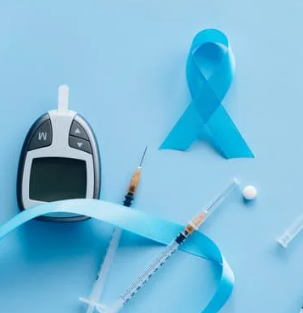As many of you know, there have been a number of federal regulatory developments concerning the required collection of Sexual Orientation and Gender Identity (SO/GI) information within recent months. The new requirements are incorporated in HRSA UDS reporting for calendar year 2016, Meaningful Use Stage 3 (CMS, ONC HIT), and other health care agency data requests.
Despite the increasing body of literature identifying health care disparities among LGBTQ (Lesbian Gay Bi-Sexual Transgender Queer) communities and efforts to target said evidenced disparities—involving access to preventative care, insurance coverage, vulnerability to violence, risk behavior, health outcomes, etc.— barriers to improving the health of the at-risk population remain.
Above all, there exists a great deal of confusion among providers and health center staff on how to document and decipher this information within a center’s Electronic Health Record (EHR), and then use it to appropriately identify care needs, as well as acknowledging a patient’s pronoun preferences and other means of displaying respect and acceptance. Concerns that SO/GI questions violate the privacy, identity, and/or confidentiality of patients along with fear of causing patient discomfort contribute to the gap in documentation. Even those facilities that have specialized in providing care for the LGBT community have struggled to adapt systems that were never designed to handle SO/GI designations.
While it is important to respect a patient’s identity and maintain their privacy concerns, the primary responsibility of the health care provider is to treat a patient’s medical needs in accordance with clinical guidelines, and this includes identifying a patient’s complete gender history (both sex at birth and current gender identity) and addressing their care accordingly.
To start, I want to clear up some confusion regarding sex, gender identity, and sexual orientation and how they are defined, captured, and displayed within different reporting areas of Azara DRVS. With our latest product release, for those centers who contacted Azara regarding SO/GI mappings, SO/GI data will be visible in UDS tables 3a & 3b and available for validation.
Within DRVS, there are three relevant fields—sex, gender identity, and sexual orientation— loosely defined below:
- Sex - refers to one’s natal sexual anatomy ( aka the “assigned sex at birth”)
This contributes to information found on the Patient Visit Planning report, measure patient detail, registries, and clinical screening measure inclusion criteria.
- Gender Identity – The gender to which one identifies (not necessarily binary)
This data will be visible in UDS table 3a/3b, and impacts quality measures involving risk for sexually transmitted infections and HIV.
- Sexual Orientation –how one identifies sexually, to whom one is physically or emotionally attracted to, or with whom one has sexual relations
This data will be visible in UDS table 3a/3b, impacts quality measures involving risk for sexually transmitted infections and HIV.
With regards to prevention screening measures in DRVS—Cervical Cancer Screening, Breast Cancer Screening, etc.—sex plays a significant role in meeting the inclusion criteria of a measure. In DRVS, the patient’s sex (aka “sex assigned at birth”) and the current anatomical state (occurrence of a mastectomy, hysterectomy, etc.) are the primary determinants of whether or not a patient is included in the denominator of a measure. Thus, it is important to document sex appropriately in conjunction with a patient’s current gender identity status in order to appropriate the best level of care. For example, transgender men (male born females) should continue to be offered a pap test and screened for breast cancer in accordance with the standard of care, while transgender women (females born male), similarly, should continue to be offered prostate screenings where appropriate.
Some transgender patients may have identification and/or insurance documents that do not match their current gender identity, while others may have forms that reflect their current gender identity without acknowledgement of their sex at birth. Without suitable EHR documentation to replace the patient supplied forms, providers are left with gaps in the patient’s medical history and may fail to deliver the right level of care, especially if patients present with a non-definitive gender identity. Providers should avoid making assumptions about gender and should never bypass SO/GI questions in service of perceived comfort for the provider and/or patient. All clinical and front desk staff should be trained to ask the right questions and to document appropriately.
Consider the hypothetical scenario below:
Dan 60 year old male presents with pain in his chest. X-rays reveal he has developed cancer is his residual breast tissue after having received breast removal surgery. Further investigation reveals Dan was born female but identifies as a Trans-Male. Despite having a family history of breast cancer, his screening recommendation was overlooked due to his transgender status and sex at birth not being appropriately documented and clearly visible within the EHR.
Working with different EHR vendors:
Regardless of the vendor, SOGI questions should be collected in a standardized format as discrete data points in separate fields. For example, “bisexual trans-male” should not be an acceptable data point for electronic data collection, as sexual orientation and gender identity represent two unique data entities. Furthermore, gender should be broken out into two distinct parts: Current gender identity and sex at birth.
To increase transparency and help expedite and improve care, SO/GI data should also be visible in multiple sections of the EHR (ideally both registration and chart).
While many provider organizations and/or EHRs may document SO/GI status differently, the following categories are examples of the standard to which Azara and other reporting entities ascribe:
The categories for SO/GI status are listed below
- What is the Sexual Orientation of the patient?
Do you think of yourself as:
- Lesbian, gay, or homosexual
- Straight or heterosexual
- Bisexual
- Something else (further description optional)
- Don’t know (means the patient was not asked)
- Choose not to disclose (this means the patient was asked but chose not to reveal)
- What is the Gender Identity of the patient?
Do you think of yourself as:
- Male
- Female
- Female-to-Male(FTM) / Transgender Male / Trans Man
- Male-to-Female(MTF) / Transgender Female / Trans Woman
- Genderqueer, nether exclusively male nor female
- Other / additional gender category (further specification optional)
- Something else
What sex were you assigned at birth on your original birth certificate?
- Male
- Female
- Decline to answer
Another commonly asked question is when should you be documenting SO/GI information? If not prior to arrival, then during onsite registration. If questions remain unanswered, then it is important to re-ask these questions at the patient’s clinical encounter. While asking the standardized SO/GI questions is mandatory, it is equally important to inform patients of the purpose of the collection of SO/GI information –to help in the delivery of prevention, screening, and treatment services.
SOURCE: Collecting Sexual Orientation and Gender Identity Data in Electronic Health Records: Taking the Next Steps. National LGPT Health Education Center [Program of the Fenway Institute]
If your center is documenting SOGI information but has not yet reached out to Azara to code and map this information, please contact support at your earliest convenience.
REFERENCES
https://essentialhospitals.org/wp-content/uploads/2016/06/Cahill_Mena_Baker_IdentityDataInEHRs.pdf
Related Articles

Socioeconomic Status, Access, and Control: Rethinking Diabetes Outcomes
Explore Insights
Navigating the Social Care Landscape: Five Lightbulb Moments from the SIREN National Research Meeting
Explore Insights
